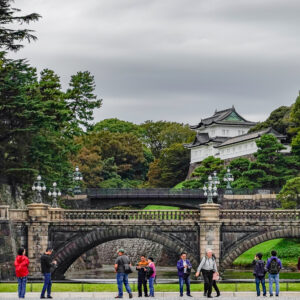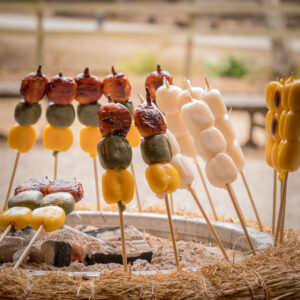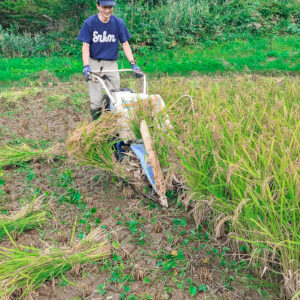From November 14th through 18th , 2019, Dai-jo-sai, or the grand thanksgiving rite, was carried out at the Imperial Palace in Tokyo. In November every year, the Japanese Emperor conducts Nii-name-sai, a rite to thank the ancestral deities for the year’s harvest of rice at the palace and Dai-jo-sai is the first Nii-name-sai performed by the new emperor who ascended to the imperial throne in last May.
The imperial rites signify where the rice cultivation has been placed in the formation of the nation. Japan has a temperate climate and its mild temperature and high rainfall are quite suitable for rice cultivation. Rice yields much more than other grains do so it supported the increasing population of the nation. Historically, the rice cultivation has been in the center of the Japanese society and culture and naturally, it has governed the minds of the Japanese in many ways.
 (The Double-Bridge of the Imperial Palace in Tokyo)
(The Double-Bridge of the Imperial Palace in Tokyo)
The group consciousness of the Japanese should be the one. In the rice cultivation before the introduction of powered vehicles, group works were essential and people in the community were, in a sense, obliged to work together and help each other, putting emphasis on the harmony in the society. People often avoided mentioning his or her honest feeling and opinion so as not to make a noise in the community. These behaviors are thought to be the reflection of the Japanese group consciousness nurtured through the rice cultivation and it resides deep in the minds of most of Japanese even today.
Rice has been the staple food for the Japanese. If the Japanese were asked what will be their last bite in their life, I’d say, almost all Japanese would answer his or her own favorite side dish with a bowl of “steamed rice”. My own answer would be miso soup and steamed rice. Besides steamed rice, the Japanese utilize rice in many different ways such as rice wine (Sake), rice cooking wine (Mirin), rice vinegar (Su), rice cake (Mochi, photo), rice cracker (Osenbei, Arare) and the list could go on. Sake, Mirin and Su are basic seasonings for the Japanese foods, or Washoku, so rice is the key factor to determine the tastes of Washoku. By the way, Washoku has been designated a World Intangible Cultural Heritage by UNESCO.
 (Mochi, burned over charcoal)
(Mochi, burned over charcoal)
Last September I visited Akita which is located in the northern part of the Honshu Main Island. Akita is famous for the high rice yield and I was given an occasion to work with one of my friends there for the harvest of rice in his rice field. The photos pasted on this blog page were taken that time. He said to me that he would welcome foreign visitors next year for the harvest of rice. Would you be the first guest?
By Jin Shibata
 (Harvesting rice by the writer of this article)
(Harvesting rice by the writer of this article)
